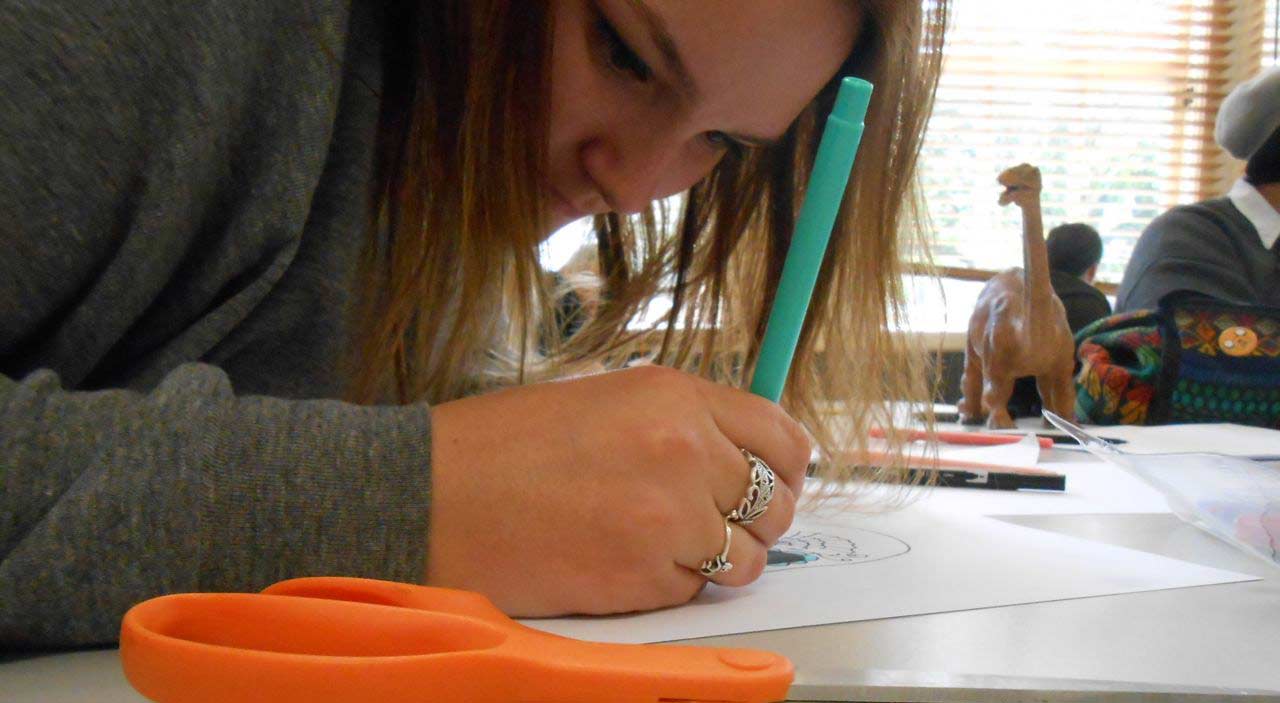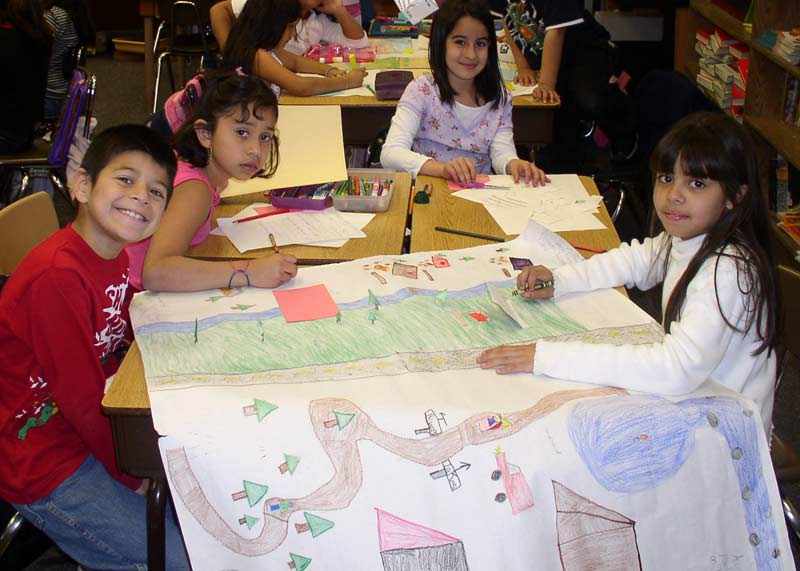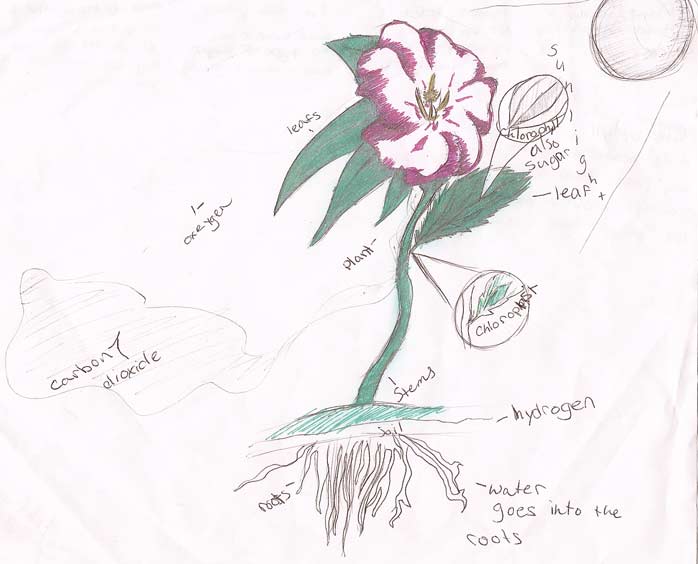Parents and teachers, please pass this on to your kids who enjoy drawing:
Decades ago, when I was in elementary and middle school, other kids sometimes said I was weird because I was really involved in my drawing. But they also thought of me as “the artist”, and that made me feel cool and gave me self-confidence in other school subjects besides just art class. In high school the label of artist became official when I started drawing cartoons for the school newspaper. Quite honestly, my drawing skills helped me get through school.
If you like to draw, your drawing skills can help you make friends, impress your teachers, and get better grades—even if you don’t think of yourself as an artist. Here’s how drawing can help you in school:
1. Make Friends
Having a common interest is helpful when making new friends at school. Drawing is a pastime that many people enjoy. If you meet other students who really like to draw, consider organizing an art club. Together, you can create visual art projects for school events, or make comic books to share with friends.
Even non-artists are curious about drawing. Whether it’s a doodle on a notebook, or a picture for a school assignment, your drawings will catch people’s interest. It’s fun when people start talking with you about your work. It means they’ve noticed your unique drawing skills.
You don’t have to be a professional artist to talk about drawing with other students. Remember, most people enjoyed making drawings when they were young kids. They’ll be interested in talking with you about it. The conversation could be an open door to starting a friendship. Who knows, maybe you’ll inspire your new friends to start drawing again!
And don’t forget, friends are always thrilled to receive their portrait, hand-drawn and signed by you.
2. Impress Your Teachers
Your teacher may or may not be impressed with your sketch of the race car that everyone is passing around during science. But chances are good she’ll be very impressed with your drawing of a dragonfly to share during a class discussion of insects. (Try this free drawing lesson: dragonfly.)
Teachers enjoy reading reports that are interesting to look at. When your teacher enjoys your report, your chances of getting a better grade are greatly improved. Carefully planned drawings make information easy to understand and enjoyable to read.
Although drawing doesn’t take the place of writing skills, it can show your teacher you understand a subject. When it’s difficult to think of words to write, a drawing can make your ideas visible. Drawing is a form of visual language that helps express your thoughts to your teacher. Effective communication with your teacher improves your understanding of a subject and helps you to become a successful student.
3. Make Better Grades
Show What You Know: An accurate, neatly drawn diagram may help to nail down a stellar grade. It shows what you’ve learned about a subject and adds interest to your presentation. A diagram of a flower shows a sixth-grader’s knowledge of photosynthesis.
Drawing and Writing: If “a picture is worth a thousand words” then drawing is money in the bank when it comes to journaling. Expressing yourself through drawing opens a direct line of communication with your teacher. Honest communication leads to getting help in difficult school subjects, which can lead to receiving better grades.
If you enjoy drawing, add it to your writing assignments whenever possible. It can be as simple as gaining extra-credit points for adding an illustration of the Spirit of St. Louis to your report on aviation, or as elaborate as creating a graphic novel for your next writing assignment. (Try this free drawing lesson: Spirit of St. Louis.)
Think With Your Pencil: The doodles you draw while talking with classmates on the phone can lead to valuable ideas. Much of your thinking and problem solving happens deep down in your brain. Doodling with a pencil or pen gets your thinking process onto paper. A random doodle can become the solution to a frustrating geometry problem. A swirling scribble can turn into an abstract design for Friday’s art assignment.
Visual Notes: Sometimes your teacher simply talks too fast! To keep up with the lecture, try drawing visual notes along with your written notes. Don’t worry about details. Quick lines and shapes can describe how a steam engine works, or show the structure of a plant cell or a dinosaur.
Draw Better Math Grades: Bring a smile to your teacher’s face! During math, take time to neatly and accurately draw your geometry lessons, number lines for integers, and shapes for fractions. This helps your teacher to clarify your method and answers. It also shows your interest in learning math, which opens the door to better understanding and better grades. The formula is easy: Teacher Smile + Understanding = Better Grade.
History and Geography: Whenever you can, apply your drawing skills to history and geography assignments. Adding illustrations, such as a drawing of a U.S. president may add grade points to your history report. Taking time to draw interesting details on a map of the Middle East can improve your grade in geography. Whether you draw with a pencil or computer, your oral report on the Civil Rights Act will be more engaging if you include charts and graphs. (Try this free drawing lesson: Abraham Lincoln.)
Art and Science: Letting your passion for drawing flourish in art classes for a better grade is a no-brainer. You’ll find countless ways to put drawing to work for you, such as sketching ideas for a ceramics project or drawing pencil outlines for a watercolor painting. Excelling in art class could be the edge you need toward raising your GPA.
Albert Einstein famously said, “Imagination is more important than knowledge.” Channeling your creative mind into your science studies can help you understand complex scientific concepts and theories. Visual notes on how atoms form molecules are very helpful when studying for the next physical science exam. Your hand-drawn observations showing the metamorphosis of a butterfly can become illustrations for your biology report.
Extra Credit and Extra Curricular Activities: Straight-up: Doing projects for extra credit can mean the difference between lower and higher grades. Ask your teacher how you can use your drawing skills to earn extra credit. Then get to work! Use your imagination and your love of drawing to push your grades up to the next level, and beyond! (Try this free drawing lesson: dinosaur)
When it comes to the number of ways drawing can help you in school, the sky’s the limit! I’ve shared only some of the possibilities to get you started. If you have ideas on how to use drawing in school, please share them with me. I’d love to hear from you!
Here are some of the students I work with in high schools learning to apply their drawing skills: Click here
Rob Court
Latest posts by Rob Court (see all)
- Drawing With Friends - April 11, 2022
- Frozen in Time: Cellphone Users as Models to Draw - April 8, 2022
- Getting Out & Getting Real - June 20, 2021
- Life Lines: Sketching the Unseen World of Movement - June 20, 2021
- The Ups & Downs of Urban Sketching - May 9, 2021


